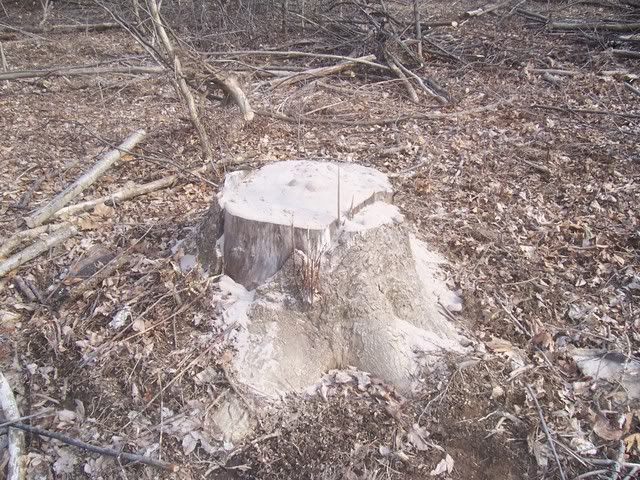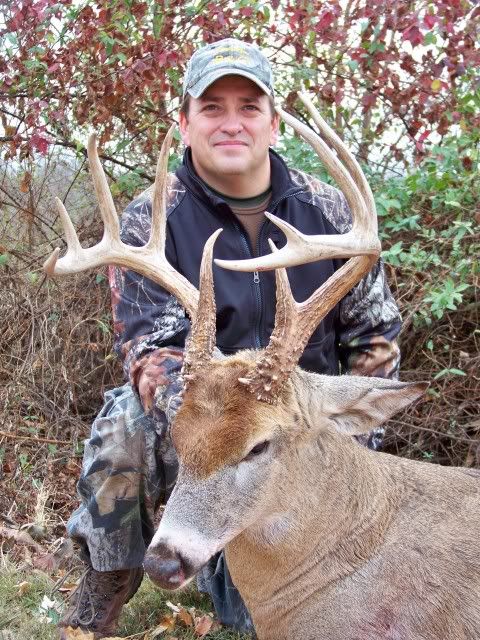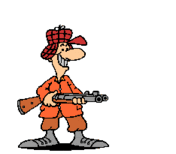Post by ff1126 on May 30, 2007 15:47:51 GMT -5
This Mineral Lick works like nothing else that I have tryed. The deer just love it.
The ultimate goal of mineral supplements in deer management is to increase antler size and improve overall health of deer herds by providing minerals or trace minerals that may be lacking in a given area.
Although the jury is still out on effects of mineral supplements on wild deer populations since most studies have been on pen raised deer. Studies on wild population have been inconclusive and to a degree the same on pen raised deer due to other variables such as supplemental feeding that takes place in these areas. The direct benefits will probably be far greater in certain regions that lack certain trace minerals in the soil and plants.
One mixture or home recipe of deer minerals we recommend to landowners is a mix of one part Dicalcium Phosphate, 2 parts trace mineral salt (loose), and 1 part loose stock salt. All of these are available to purchase at most local feed and farm supply stores.
Just to give you a little background on these minerals and what they are designed to do lets start with the Dicalcium Phosphate
Dicalcium phosphate is used primarily as dairy cattle feed additive and other animal feeds. It promotes feed digestion, weight gain, and milk production, which is obviously beneficial to a lactating doe deer. Dicalcium phosphate contains roughly between 18 and 21 percent phosphorus and 19 to 23 percent calcium.
You're probably asking why this is important by now. Well if your talking about growing antlers on deer you need to take a look at what is the make up of a deer antler.
Hardened antlers contain 40 to 50 percent organic matter from mostly proteins while the most abundant minerals consist of calcium and phosphorus. The demands for these minerals on a daily basis can be significant for antler production.
In addition, a lactating doe's milk contains high percentages of both calcium and phosphorus to pass on to their young, also causing a significant mineral drain on the doe. What makes all this significant is the fact that phosphorous cannot be synthesized by the body so it must be provided in needed levels in the animals diet. This is where a mineral mix such as this could be very valuable if an area is lacking in these naturally.
Trace mineral salts do two things for deer. The first and foremost is it does have the salt/sodium to attract the deer and promote the use of the mineral. Secondly, it provides the trace minerals such as magnesium and potassium that are very important to herd health but are not found in significant quantities like others.
Stock salt is again like part of the above. It has the sodium to attract deer to the minerals. Most mineral mixes have salt as their most abundant ingredient since a mix of just phosphorus, calcium, and other trace minerals have little attraction to deer once mixed with the soil.
As for directions of use we suggest using a 3-pound coffee can to measure out 1 part dicalcium phoshate, 2 parts trace mineral salt, and 1 part stock salt. Mix all these together once ready to use but keep components separate during storage. Dig a hole in the soil about 36 inches wide and 6 inches deep and mix the mineral well with the soil.
This should be replenished after 6 months and then once a year thereafter. Most use seems to be during the spring and summer months on mineral licks. It's a good idea to keep these areas replenished and stocked in the same spot to maintain use.
1 part Di-calcium phosphate, this is a dairy feed additive bought at feed stores.
Comes in 50lb Bags at around $11.00 you need one bag.
2 parts Trace mineral salt, the red and loos kind without the medications.
Comes in 50lb Bags you need two bags.
1 part Stock salt, ice cream salt.
Comes in 50lb Bags you need one bag.
Directions:
-Use a 3 pound or similar size coffee can to use as your measure for each part of the mix.
-Mix all together well but not until read to use, keep ingredients separate until ready to put to use.
-Dig or tear up a circle in the soil about 36 inches wide and about 6 inches deep.
-Mix your mineral mixture with the soil.
Maintenance:
-Replenish in 6 months with fresh supply of mineral, and then each year there after.
I put this lick out in March,

I checked on it 05-28-07. The deer have already been working it over.

The ultimate goal of mineral supplements in deer management is to increase antler size and improve overall health of deer herds by providing minerals or trace minerals that may be lacking in a given area.
Although the jury is still out on effects of mineral supplements on wild deer populations since most studies have been on pen raised deer. Studies on wild population have been inconclusive and to a degree the same on pen raised deer due to other variables such as supplemental feeding that takes place in these areas. The direct benefits will probably be far greater in certain regions that lack certain trace minerals in the soil and plants.
One mixture or home recipe of deer minerals we recommend to landowners is a mix of one part Dicalcium Phosphate, 2 parts trace mineral salt (loose), and 1 part loose stock salt. All of these are available to purchase at most local feed and farm supply stores.
Just to give you a little background on these minerals and what they are designed to do lets start with the Dicalcium Phosphate
Dicalcium phosphate is used primarily as dairy cattle feed additive and other animal feeds. It promotes feed digestion, weight gain, and milk production, which is obviously beneficial to a lactating doe deer. Dicalcium phosphate contains roughly between 18 and 21 percent phosphorus and 19 to 23 percent calcium.
You're probably asking why this is important by now. Well if your talking about growing antlers on deer you need to take a look at what is the make up of a deer antler.
Hardened antlers contain 40 to 50 percent organic matter from mostly proteins while the most abundant minerals consist of calcium and phosphorus. The demands for these minerals on a daily basis can be significant for antler production.
In addition, a lactating doe's milk contains high percentages of both calcium and phosphorus to pass on to their young, also causing a significant mineral drain on the doe. What makes all this significant is the fact that phosphorous cannot be synthesized by the body so it must be provided in needed levels in the animals diet. This is where a mineral mix such as this could be very valuable if an area is lacking in these naturally.
Trace mineral salts do two things for deer. The first and foremost is it does have the salt/sodium to attract the deer and promote the use of the mineral. Secondly, it provides the trace minerals such as magnesium and potassium that are very important to herd health but are not found in significant quantities like others.
Stock salt is again like part of the above. It has the sodium to attract deer to the minerals. Most mineral mixes have salt as their most abundant ingredient since a mix of just phosphorus, calcium, and other trace minerals have little attraction to deer once mixed with the soil.
As for directions of use we suggest using a 3-pound coffee can to measure out 1 part dicalcium phoshate, 2 parts trace mineral salt, and 1 part stock salt. Mix all these together once ready to use but keep components separate during storage. Dig a hole in the soil about 36 inches wide and 6 inches deep and mix the mineral well with the soil.
This should be replenished after 6 months and then once a year thereafter. Most use seems to be during the spring and summer months on mineral licks. It's a good idea to keep these areas replenished and stocked in the same spot to maintain use.
1 part Di-calcium phosphate, this is a dairy feed additive bought at feed stores.
Comes in 50lb Bags at around $11.00 you need one bag.
2 parts Trace mineral salt, the red and loos kind without the medications.
Comes in 50lb Bags you need two bags.
1 part Stock salt, ice cream salt.
Comes in 50lb Bags you need one bag.
Directions:
-Use a 3 pound or similar size coffee can to use as your measure for each part of the mix.
-Mix all together well but not until read to use, keep ingredients separate until ready to put to use.
-Dig or tear up a circle in the soil about 36 inches wide and about 6 inches deep.
-Mix your mineral mixture with the soil.
Maintenance:
-Replenish in 6 months with fresh supply of mineral, and then each year there after.
I put this lick out in March,

I checked on it 05-28-07. The deer have already been working it over.









 Thats still up in the air though....
Thats still up in the air though....

